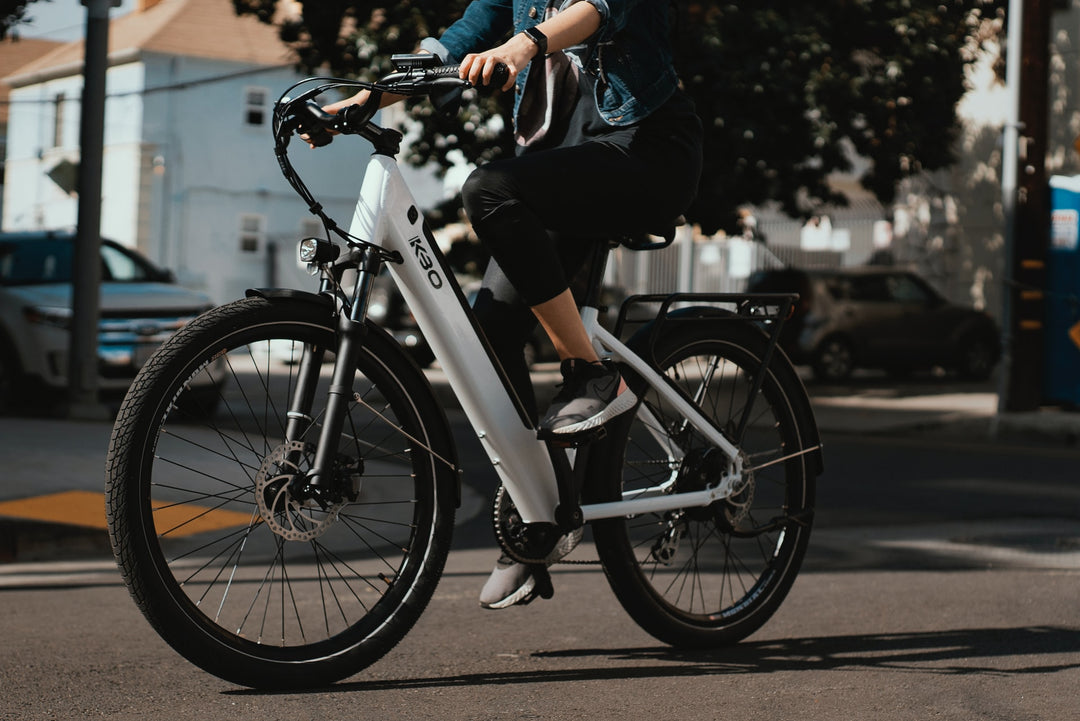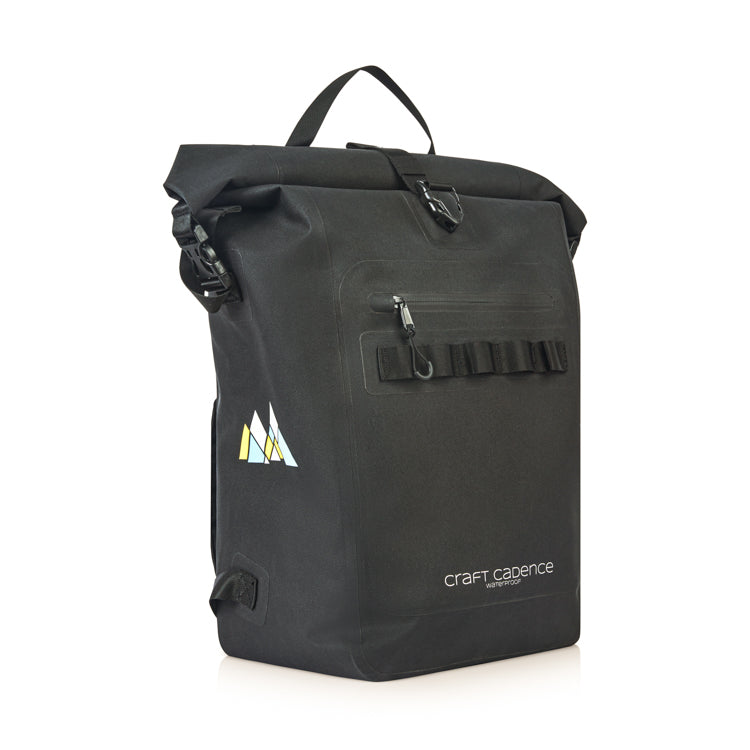A guide to buying environmentally friendly and responsibly sourced cycling jerseys
Cycling is one of the most environmentally-friendly forms of transport. You are not relying on fossil fuels to get you from a to b. It makes sense to try to extend this ethos to all aspects of cycling. Brands and fabric manufacturers have made significant progress towards bringing environmentally friendly and responsibly sourced cycling jerseys to the market. Some of the fabrics made from recycled fibres and plastics have all the same properties as high-end cycling jerseys made from first use plastic but cause a lot less damage to the environment. Let’s look at why you should consider buying environmentally friendly cycling jerseys and the information you should look out for.
Why buy environmentally friendly cycling jerseys?
Over 8 million tons of wastes end up in our seas every single year, with a large proportion of that being plastics that will not biodegrade. According to recent studies, only 48% of the plastic bottles used in Europe are recycled. Our excessive use of one-use plastics and large amounts of waste generated from manufacturers looking to save money on production is wreaking havoc on wildlife and the planet’s delicate ecosystem.
Regrettably, the clothing industry is renowned for its considerable contribution to global carbon emissions and waste production, especially cycling and sportswear, which is often made from virgin synthetic materials.
Fortunately, several cycling clothing brands are introducing revolutionary methods into their design, manufacturing and distribution to help tackle the impact they (and you as the end consumer) have on the environment. They use recycled fibres and yarn, reduce plastic in packaging, offer free repairs for life, and reduce the manufacturing process’s waste.
A search online and you might find that options are few and far between when it comes to brands that make sustainability front and centre of their product offering. So how do you go about buying the most environmentally friendly jersey possible? Here are a few things to look out for when buying environmentally friendly cycling jerseys:
Recycled fabrics
Recycled materials consume less energy, lower carbon footprint and produce less waste than manufacturing from virgin materials. Most cycling jerseys are made from polyester, which at the core involves plastic pellets spun into threads using sophisticated manufacturing processes. Look for brands that are finding innovative ways of utilising plastic waste to produce highly technical fabrics that perform just like jerseys made from virgin polyester.
Credibility and Trust
Take a closer look at the recycled material a brand is using. Any reputable and responsibly sourced manufacturer will be proud to share where their plastics and materials come from and how they help the environment with their production methods and whether the materials are responsibly sourced.
Performance
Performance should not be compromised when looking for an environmentally friendly cycling jersey. After all, if the product is not comfortable, does not work well and does not last, it will ultimately create waste and defeat the purpose of sustainability. So performance is an important purchasing factor when looking for an environmentally friendly cycling jersey.
A high quality technical fabric made from recycled sources should not have any noticeable difference in performance compared to the current non-recycled cycling jerseys you have.
So look for brands that can ensure that their cycling jerseys can stand the test of time.
Transparency
All reputable eco-friendly brands will be keen to share with you the journey that the plastics have gone through in order to make the responsibly sourced cycling jersey. If you cannot trace the location, such as a specific area of sea or waste treatment facility, you should be questioning why they are not entirely transparent with their sources.
Fabric makers that specialise in sustainability
Look for brands that partner with fabric makers whose mission is sustainability. These makers make it their mission to combine performance with transparency, responsible sourcing certification of processes by third parties. Look for makers like REPREVE, launched in 2007 and since then has become the world's leading brand of technical recycled fibre.
Another example is greensoul from the fabric maker MITI. Through their Greensoul recycling technology, they are offering “100% post-consumer polyester yarns, 100% pre-consumer sustainable nylon recycled from industrial wastage and up to 65% pre-consumer sustainable premium elastane recycled from industrial wastage”. This product is however still nascent and has not found its way into mainstream cycling wear.
Deep dive into REPREVE
Despite efforts by other fabric makers, REPREVE is by far the largest brand of technical fabrics using recycled materials, and deserves a closer look.
To date, they have recycled over 20 billion plastic bottles. They proudly state that they have conserved enough energy to power 189,249 homes for 1 year and saved enough water to provide 2.3m people with their typical daily drinking water for a year.
The reclaimed plastic bottles are first shredded, washed and then melted down, allowing it to be spun into yarn and woven into a fabric. This process requires a lot less energy and water than the production of virgin fibres.
To make their processes fully transparent and traceable, REPREVE is the only eco performance fibre with a UTRUST verification. This is a safeguard against any frauds out there trying to market their product as containing the recycled REPREVE fibres, as they can test a piece of fabric to identify if REPREVE is present, ensuring that there are no false claims.
The REPREVE fibre can be woven together to create performance cycling jerseys with all the characteristics of high-quality jerseys made from virgin fibres. Cycling jerseys woven with the REPREVE fibre are fast-drying, moisture-wicking, highly breathable and smooth and comfortable to the touch.
Conclusion
We can all do our bit to help stem the environmental impact humans have on wildlife and the earth’s ecosystems. For cyclists that are already doing their bit by not using combustion engines, purchasing an environmentally friendly and responsibly sourced cycling jersey is a no brainer. Do your research on the brand and ensure that they have the certification and accreditation to back up their claims of selling environmentally friendly cycling jerseys.
It is no longer the case that you have to accept sub-par performance. You can now get responsibly sourced cycling jerseys made with fibres such as REPREVE that give you all the same performance and properties as cycling jerseys made from nonrecycled and heavily polluting synthetic materials.
Have you seen any other environmentally friendly cycling jerseys? Would you consider buying a jersey made from recycled fibres? What would stop you from purchasing a responsibly sourced cycling jersey?
A note regarding Craft Cadence jerseys
Craft Cadence’s jerseys made from REPREVE fabric is an option worth considering for the eco conscious cyclist. They have been designed not to compete with high end jerseys by the established brands (which are great, by the way), but to fill a specific niche in the market. It is a mid-tier jersey for:
- A commuter who wants to try out road cycling, who does not want a tight body hugging jersey
- The environmentally conscious cyclist, who wants both the performance and sustainability credentials of REPREVE fabric, made from recycled PET bottles, with full transparency of the origins of the waste materials and certification of the recycling process
- Useful details such as silicone grippers, zipped pocket, reflective strips, side ventilation and a zip guard, that you get from the major brands
Overall, a jersey that punches above its weight and is suitable for both commuting and weekend riding.



